Celebrating 25 years of Hudson River Park
Hudson River Park was created by the state legislature 25 years ago, and to celebrate it, I wanted to hear some origin stories from the four presidents of the park. In 1998, the master plan called for 13 piers devoted to public open space, including our own Piers 25 and 26. It also called for an estuarine sanctuary to conserve and research marine resources; the Trust is creating the most public-facing of that plan with the estuarium at the end of N. Moore.
The Hudson River Park Act would not have progressed without then-Governor George Pataki, who would eventually pick the park’s first president, Rob Balachandran. He was counsel in the governor’s office at the time and the park bill was tossed on his desk just hours before the press conference.
(The slide show by Carl Glassman, above, gives you a picture of what the piers looked like back then.)
From Rob Balachandran:
I didn’t get it at first. Looking back on it, I didn’t get a lot of things about New York City. I was an upstate guy and I grew up with 20 acres. When I looked at grass, all I could think was I had to mow it, so I hated the thought of wide open lawns. And then I got down here and saw how people were clinging to these crumbling piers — how they were just desperate to have some open space, something I took for granted.
I certainly didn’t get that we were transforming the westside of Manhattan. I didn’t realize then how important this was from the real estate side — that we were building a backyard that would change the value of the buildings along the whole westside. I would have monthly meetings with various developers who wanted to know when we would break ground on each section. I just thought they were happy about what was going on with the park, but they knew its value.
My view of it was almost sterile — the governor’s office was very task oriented and this task was to build a park. We drafted a bill, the Hudson River Park Act, and we got the bill passed. Somehow everyone was in alignment, all these people who most of the time could not get anything done in that part of the state. And then the governor asked me to head it up and be the first president. I didn’t want to come to New York City — I thought, these people are crazy! And I’m an upstate hick. But the next thing I knew I was packing my bags.
It turned out to be the best job I ever had.
The Trust was in two sets of trailers at first, by the ballfields in Battery Park City. So I spent most of my time down in that part of the park, the fun part, the Tribeca section. That was my backyard. That’s where I hung out. I would go up to Townley’s place and get a burger. Having the Lilac, the volleyball and all the cool stuff that was on Pier 25 — that was what got me really excited.
I used to go incognito to see how people were using the park in the beginning. I kept seeing these black marks on the granite and I couldn’t figure it out. Finally, one Saturday I see these two little kids look left and right over their shoulders, then one of them pulls something out of his pocket and rubs on the stone. Next thing you know, he and his friends grab their skateboards to ride the edge of the granite.
When I asked what was in their pocket, they said, “It’s soap — that way we can grind it.” I told them they couldn’t do that because it was staining the stone, and one little kid said, “We wouldn’t have to do this if we had a place to go!” He was right. Our staff architect, Marc Boddewyn, had a friend who was a world-class skateboard park builder and he designed one for us in between Pier 25 and 26.
I am a big sports guy — I’ll play anything — and I knew we could fit in some tennis and basketball courts. My buddy and former fellow assistant counsel to the governor, Kevin Rampe, was then the president of LMDC and was looking for some good projects downtown to fund. We weren’t ready to build that section of the park yet, but we were able to save that space in Tribeca and received advance funding from the LMDC to build the tennis and basketball courts.
Now I’m on the board of the SUNY Research Foundation and a lot of that interest comes from my time at the park. It made me into a wannabe wonky science person.
It really wasn’t until after I left that I could really see what had happened — it just hit me. How transformative it was. At first, I was banned from the park by everyone: the staff because I acted like I still worked there — I would call and complain — and even my wife. She would not let us drive on the Westside Highway because she didn’t want to hear me talk about the park. It was a hard thing to leave.
For six years, I was the luckiest guy in the city — surrounded by the best group of professionals who turned the park from a concept to a reality. And I got to do the best part: be there at the finish line and cut the ribbon.







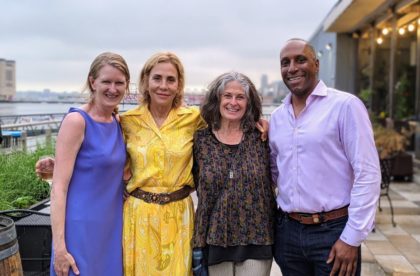
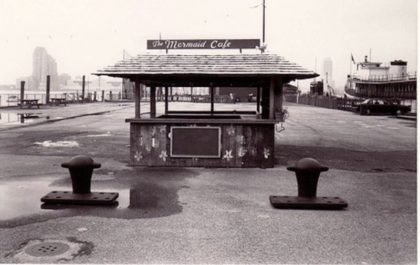
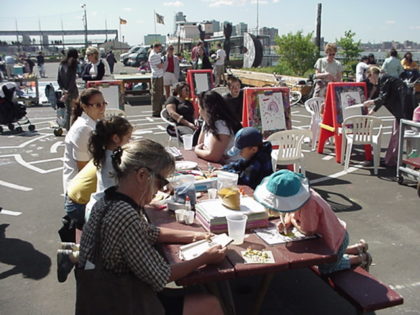
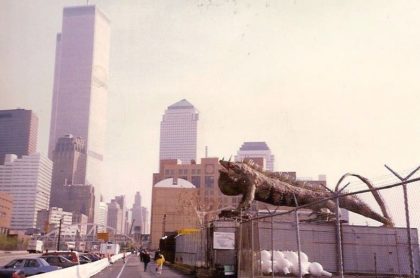
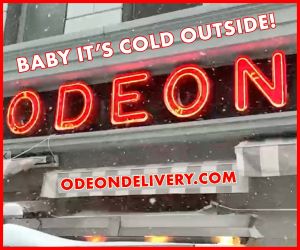






Love this! I remember the week BPC’s Rockefeller park opened, and later, having our 6th grade graduation party at the first iteration of Pier 25. Those burger shack burgers tasted like summer!
It was amazing to see a park and space meant for kids to suddenly emerge from off-limits nothingness. A big thank you to everyone that made this wonderful spaces possible.
thanks for this article! i hope our newer neighbors read and appreciate the years of effort involved
Love this article, thank you for sharing the history. I’ve lived in the neighborhood since 2015 and these piers bring me so much joy for a peaceful stroll daily.
As a mom of a skateboarder- I am so thankful for that skatepark.